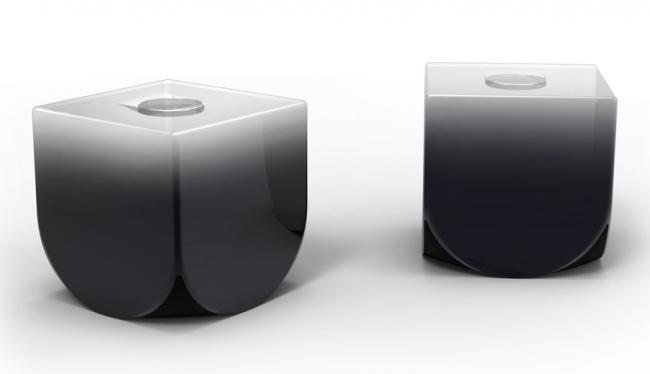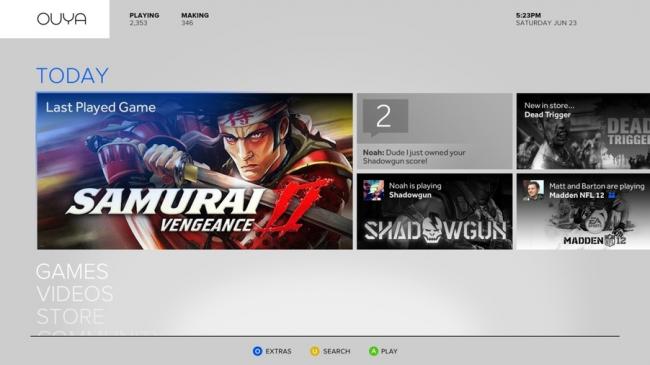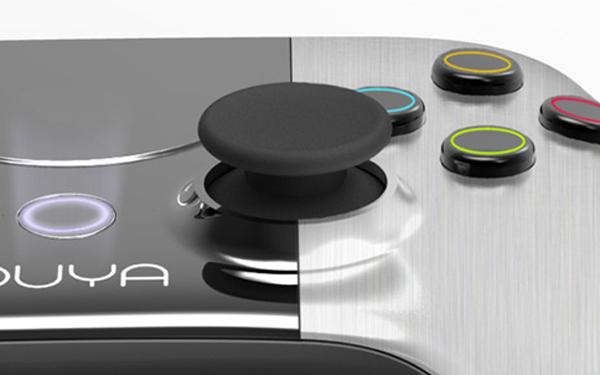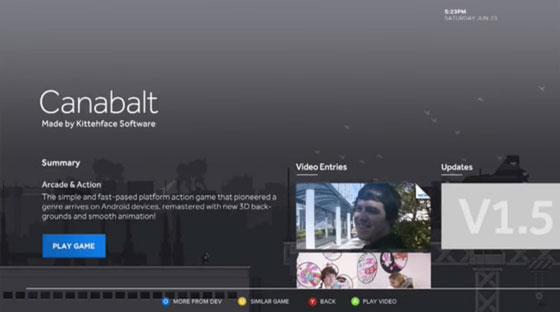- Wondering how to get Monopoly GO! free rolls? Well, you’ve come to the right place. In this guide, we provide you with a bunch of tips and tricks to get some free rolls for the hit new mobile game. We’ll …
Best Roblox Horror Games to Play Right Now – Updated Weekly
By Adele Wilson
Our Best Roblox Horror Games guide features the scariest and most creative experiences to play right now on the platform!The BEST Roblox Games of The Week – Games You Need To Play!
By Sho Roberts
Our feature shares our pick for the Best Roblox Games of the week! With our feature, we guarantee you'll find something new to play!All Grades in Type Soul – Each Race Explained
By Adele Wilson
Our All Grades in Type Soul guide lists every grade in the game for all races, including how to increase your grade quickly!
Backing from Notch, outside funding, and more: OUYA’s Julie Uhrman attempts to take on critics and set the record straight
Since its explosive Kickstarter success, the OUYA – an upcoming, $99 Android console – has been everywhere. With nearly five million dollars raised in just over a week [at the time of writing], it’s not hard to argue that people are excited about the prospect of changing the state of gaming on their TV. And yet, the purportedly disruptive product has its fair share of critics. Those who insist there are too many practical reasons preventing the console from attaining its price point, delivering consistent experiences, and proving secure for gamers and developers.

Since its explosive Kickstarter success, the OUYA – an upcoming, $99 Android console – has been everywhere. With nearly five million dollars raised in just over a week [at the time of writing], it’s not hard to argue that people are excited about the prospect of changing the state of gaming on their TV. And yet, the purportedly disruptive product has its fair share of critics. Those who insist there are too many practical reasons preventing the console from attaining its price point, delivering consistent experiences, and proving secure for gamers and developers.
In order to cut through the he-said-she said, and attempt to get some clarity, we went straight to the source: OUYA’s CEO and project lead Julie Uhrman. What follows is an e-mail interview we had over the course of the weekend, including Uhrman’s attempts to take on critics and clear the air surrounding the potentially revolutionary project.
First and foremost, congratulations on the huge and continued success of the OUYA’s Kickstarter campaign. The point has been raised that the record-breaking rise may have a lot to do with the population’s general hunger for the new cycle of home consoles, which has been longer in wait than ever before. Do you feel there is any truth to this statement? What ingredients have people so hungry for an OUYA?
“Gamers are generally supportive of new ideas. I think that they are open to the possibility that there may be a different perhaps better way to deliver games to the television.” Here, Uhrman feels that Ouya will be top of mind for three key reasons: pricing, content, and name recognition.
“OUYA’s pricing is attractive—much lower than other consoles on the market—and they [gamers] like the idea of free to play because it allows them to sample games before committing to purchase.
[Meanwhile], the idea that OUYA could offer more breadth in types of game content is also exciting for them. Obviously the caliber of people that have gotten behind us also resonates with game fans. Who doesn’t love Notch, Jordan Mechner, Adam Saltsman? These guys are great gamemakers.”
As Uhrman tells it, though, it isn’t just gamers who will be lining up to get their hands on an Ouya. “I think developers have long felt frustration bringing console games to market,” she adds. “[With OUYA], we’ve removed the hurdles common to the current console publishing path. The submission and publishing process is modeled on how Android app submission works today [the Google Play stores allows for individuals and teams to submit their games and see them approved for distribution within a couple of weeks].
It won’t be expensive, and the economics are easy to understand. The box itself is a dev kit and you won’t need expensive SDKs. Every console comes with all the tools you will need to make a game. [Games sold on OUYA will have revenue split on a] 70/30 revenue share [in favor of the developer]. And, because it’s based on Android: it is easy to build for OUYA – you already know how it works. It is easy to bring existing content to OUYA. It can support much more than games out of the box [than other consoles].”
All statistics today seem to point in the direction of mobile (phone and tablet) gaming as the new venue for play. Among gamers, this is a hotly contested issue that has many stratifying into camps: “I’m a core gamer.” “I play games on my phone” etc. Do you worry at all about the ability to bridge this gap? That is, how likely is it that “phone gamers” (a broad generalization) will want to play content on their TV? Or that those who currently game on the TV will enjoy the somewhat technically limited experiences of OUYA?
“I think the concept of ‘gamers’ to mean a hardcore game fan may be outdated these days. Most people play digital games on one platform or another, and even people like Cliff Bleszinski—who is probably the closest thing we have to a poster boy for the hardcore—also plays games like Draw Something. We don’t think this is about whether you classify yourself as hardcore or not.
We think there are a number of places to play games and we enjoy all of them. That said, nothing beats playing games on the TV. You can lean back on the couch with your buddies playing or cheering you on and take in the action on a big screen with great HD graphics and earth-shattering sound. I’d almost say that it’s the equivalent of [watching] a movie in IMAX vs. watching the same film on the plane—the TV is just equipped to blow it out and suck you in. And that’s what we love about TV.
With respect to power and technical limitations, we are pretty confident that our team will be able to maximize our tech to deliver a pretty awesome experience. I think gamers of all stripes will enjoy playing on OUYA.”
With respect to the team at OUYA, I didn’t feel that this answer quite got to the heart of the question. It seemed filled more with marketing speak and less with real, concrete discussion about the demographic breakdown, and how OUYA planned to overcome technical limitations to offer compelling experiences to both parties. A TV may be equipped to “blow it out and suck you in,” but what does that say, specifically? To that end, my next question attempts to deal with technical issues more pointedly.
As a related follow-up, much of the promotional material for OUYA has presented it as a system that – if desired – maintains the quality of AAA play that gamers from ‘golden ages’ past have come to expect and desire. Yet considering the system’s 1GB of RAM and 8GB of storage, some have argued that this is somewhat misleading.
Are there any plans to implement streaming to offset the 500-700MB size of technically advanced games like ShadowGun, for example? And how would you address the concern that billing the system as a $99 console with freedom to tweak ignores the fact that many users will have to tweak this system to experience the gaming moments they want?
“We believe the RAM and storage will be plenty to play great games. Shadowgun already runs great on our prototype, with 1GB of RAM. Just check out the Nvidia Tegra 3 demo video to understand the graphic fidelity and broad range of games that we could support. Most existing solutions for mobile have to make performance compromises for battery life, mobility, and heat. We don’t have to do that, so we can optimize for performance. On storage, since the games are all free to play, you can always re-download them if you run out of space. We feel that most gamers will enjoy the console out of the box. However, the USB port allows for extensions – for example, a gamer could add more storage.”
On that note, are there any concerns about piracy with OUYA, and if so, how are they being addressed? Android has proven itself to be a framework that – for all the benefits of its openness – leads to an inordinate amount illegal downloading due to the ease of acquisition of many .apks [Android roote files].
How has the team anticipated the reality that designing a “hackable” console will lead to rampant piracy, or – to another extent, dishonest play in multiplayer titles – and what (if any) measures exist to head this off?
“No, developers haven’t said they’re concerned. Android has already attracted many AAA and indie developers. Developers should know that — despite the openness of our platform — all paid content on OUYA will require the user’s payment to be authenticated by us. So even if someone can get the .apk, that doesn’t give them access to the paid content. We want developers to be rewarded for the value of the games they make.”
Switching gears a bit, there was an article written by Penny Arcade Report’s Ben Kuchera regarding the fact that Mojang – from his own independent contact with them – has denied what what was the Kickstarter video’s broad insinuation that Minecraft would be coming to OUYA, instead clarifying that they are excited about the idea, but “may” bring the game to the system depending on a number of factors. What would you say to the accusation that the video has painted (through photos of a game gallery and other content) many popular developers as committed, when they are in fact more accurately “excited.” To wit, how would you address accusations about “false advertising” on this particular point (developer support)?
“Well—it would be great if people would do their homework and not let Ben have the final word. Notch himself tweeted that his main concern was that he didn’t feel his current Android version was up to snuff, and he’d want to maybe throw more people at it before putting it on OUYA. Notch and Mojang are supportive: we’ve had several conversations before and during the Kickstarter campaign, and they’ve made it clear that they’d like us to succeed and if we do they will put their games on OUYA. Mojang specifically approved exactly what we said in our video.”
“And, Notch is helping us get there. He backed our Kickstarter campaign with a very generous donation. I’m sure he wouldn’t want us to name the amount but I gotta say we were thrilled. It’s pretty awesome to have one of your heroes in your corner. And, we put developers in our video so you could hear them say what they wanted to do in their own words. But we think it’s premature for us announce a launch slate of games.”
This one concerns cost. I am extremely excited – as are many – by a $99 dollar system. However, a point has been brought about the idea of manufacturing cost for the OUYA. As an example, the Tegra chipset mentioned in the video is costed out at roughly $25 per chip. Purchased at cost then, this would allow the current fundraising total to purchase roughly 200K Tegra chips [at time of interview] — and this is to say nothing of assembling a bluetooth, touchpad-enabled controller. Looking at the numbers, the argument by some is that they don’t add up. Are you at liberty to address these concerns? Is OUYA purporting to fund the operations from Kickstarter exclusively, or have other partnerships been worked out?
“I understand why you are asking, but we have costed out our console thoroughly, vetted it with many hardware experts and manufacturing firms, and everyone has agreed we can do it at this cost. Just earlier today we met with Nvidia and they expressed full support for working with us, knowing exactly what our commitments have been.”
“We’ve said publicly that we took on friends and family money when we were getting this off the ground, and that we’ve got some really high level investors–people like Jawbone founder Hosain Rahman, Digg founder Jay Adelson, Flixster founder Joe Greenstein. (Folks who are confident in their ability to spot a winner.) Beyond that, we’re now getting incoming calls from more traditional funders (not that we are raising money right now) What is meaningful to us is that every single investor to date–from those like Jay, or my family, or Brian Fargo who came in early, or those folks who backed us later on Kickstarter—every single one of them is PERSONALLY invested in our success. We don’t take that lightly. We are just as invested in delivering on our promise so that we can make them proud.”
Where development is concerned, the Kickstarter page currently paints the picture that creating content for the OUYA means little more than creating content for the Android ecosystem, and revives the days “garage/basement” fame for independent developers. However, some have raised issue with this claim, noting that scaling and changing touch-based products for a controller experience, adding Dolby support for televisions, and other development considerations mean that in truth, developing for OUYA is a 50-100K endeavor.
“Think of it this way: developers making touchscreen Android games today have adapted to that platform. Developing for controllers doesn’t cost more than developing for touchscreen and many games on Android today already support both. Some might say that developing for touch presents more challenges—specifically when it comes to genres like racing and FPS. Ultimately, developers have to serve the best interests of their game. Thankfully our controller offers options for both.”
“Note: Dolby and DTS have licensing fees of their own but whether or not developers choose to pay them is a choice they can make individually. Budgets are also driven by the developer. Just like a chef in a kitchen with a number of options, they create the final meal with ingredients they choose and they can control their costs.”
With a minute install base compared to established iOS and Android channels, what is the reason a developer would create content for OUYA above all else? What would you say to the argument that development for OUYA is not like porting a game to a new system, but instead reconsidering its development process as a whole?
“Here’s why they will create content for us: because they can make the games they want to make. This is the path to making games on a TV that offers the most freedom to game developers. What we have said is that because it’s built on Android it offers several advantages—developers already understand it, we can host existing content out of the gate, and it can support much more than games. We hope people will do more than port, that they’ll make original creations.”
“On the question about install base, I guess I just have to say: Like all new products, this is new. We are four days in [at time of interview], and already have more than 32,000 consoles we know we’ll need to make. This is actually a blistering pace for four days. We can’t say that we know where we will be at launch because it is so early but we will do what we can to deliver a great system and go to market with flawless execution. There may be hiccups. In fact, I’m sure there will be. But I’d say that any launch requires adjustments along the way.”
Where do you stand? Do you feel Uhrman adequately took on OUYA’s critics, or does she instead create more question? Will you be getting an OUYA? Developing for it? Let us know in the comments, and we’ll be sure to keep track of your concerns for a follow-up interview as we get closer to the system’s release.
More articles...
Monopoly GO! Free Rolls – Links For Free Dice
By Glen Fox
Wondering how to get Monopoly GO! free rolls? Well, you’ve come to the right place. In this guide, we provide you with a bunch of tips and tricks to get some free rolls for the hit new mobile game. We’ll …Best Roblox Horror Games to Play Right Now – Updated Weekly
By Adele Wilson
Our Best Roblox Horror Games guide features the scariest and most creative experiences to play right now on the platform!The BEST Roblox Games of The Week – Games You Need To Play!
By Sho Roberts
Our feature shares our pick for the Best Roblox Games of the week! With our feature, we guarantee you'll find something new to play!All Grades in Type Soul – Each Race Explained
By Adele Wilson
Our All Grades in Type Soul guide lists every grade in the game for all races, including how to increase your grade quickly!








 “
“ “
“ “
“